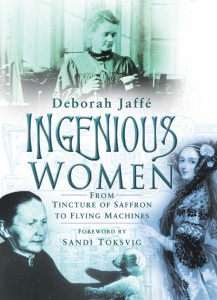When identifying and listing women inventors in patents, it is normal to rely on the forenames. Even in the late 19th century it was very unusual for American patents to state “Mrs”, and virtually unheard of for words like “spinster” or “married” to be used. British patents until the mid 1920s were more likely to give such indications (maybe 25% or more, I haven’t quantified it).
The problem with forenames is that some are not unambigiously feminine. “Mary” may sound female, but Michael Mary Brophy, with 24 British patents between 1894 and 1928, is presumably a man . Two French patents in his name give him as M., Monsieur, rather than Mme. or Mlle. (they did not always get the designation right, but normally did so). “Marie” is commonly used in a similar fashion by Frenchmen.
I have noticed in Autumn Stanley’s book Mothers and daughters of invention that she treats a British inventor with the first name Bertie as a woman. In the UK Bertie is almost exclusively used by men, and when I checked the patents found that he described himself as a gentleman. Many American men do use forenames that to British ears sound female (John Wayne was born Marion, after all, and a man who won a Navy Cross at Pearl Harbor was named Doris). How, in the absence of other evidence, can you assume the gender of an inventor ?
There is the case of Bernice J. Noyes of Boston, MA who from 1887 and 1917 was responsible for 24 patents, mainly in electrical signalling. Many can be found in Google Patents. As a woman Noyes would count as one of the most prolific inventors ever, but the difficulty is that Bernice was actually a man.
I guessed this might be so when on Google Books I came across a reference to Noyes as a patent solicitor, a trade which at the time I would assume to be entirely, or almost so, male. I had a look at the census returns for Boston on Ancestry.com and found him described as M, a man, married to Florence, and termed a patent solicitor. Here, at least, I had hard evidence that Bernice was a man. It is hardly feasible to look each person up.
